Celebrating the implementation of the landmark Geographical Indications (GIs) agreement between the European Union and China, the EU Geographical Indications Conference event was held in Beijing.
The event, attended by EU government officials, a representative from the Chinese Ministry of Commerce, and key players in the China food industry, featured a tasting of 37 GI products from 16 Member States, including wine, spirits, beer, ham, cheese, olive oil, olives, vinegar and mustard.
- food industry
- Thursday 25 March 2021, 10:00 - 17:00 (CET)
Media
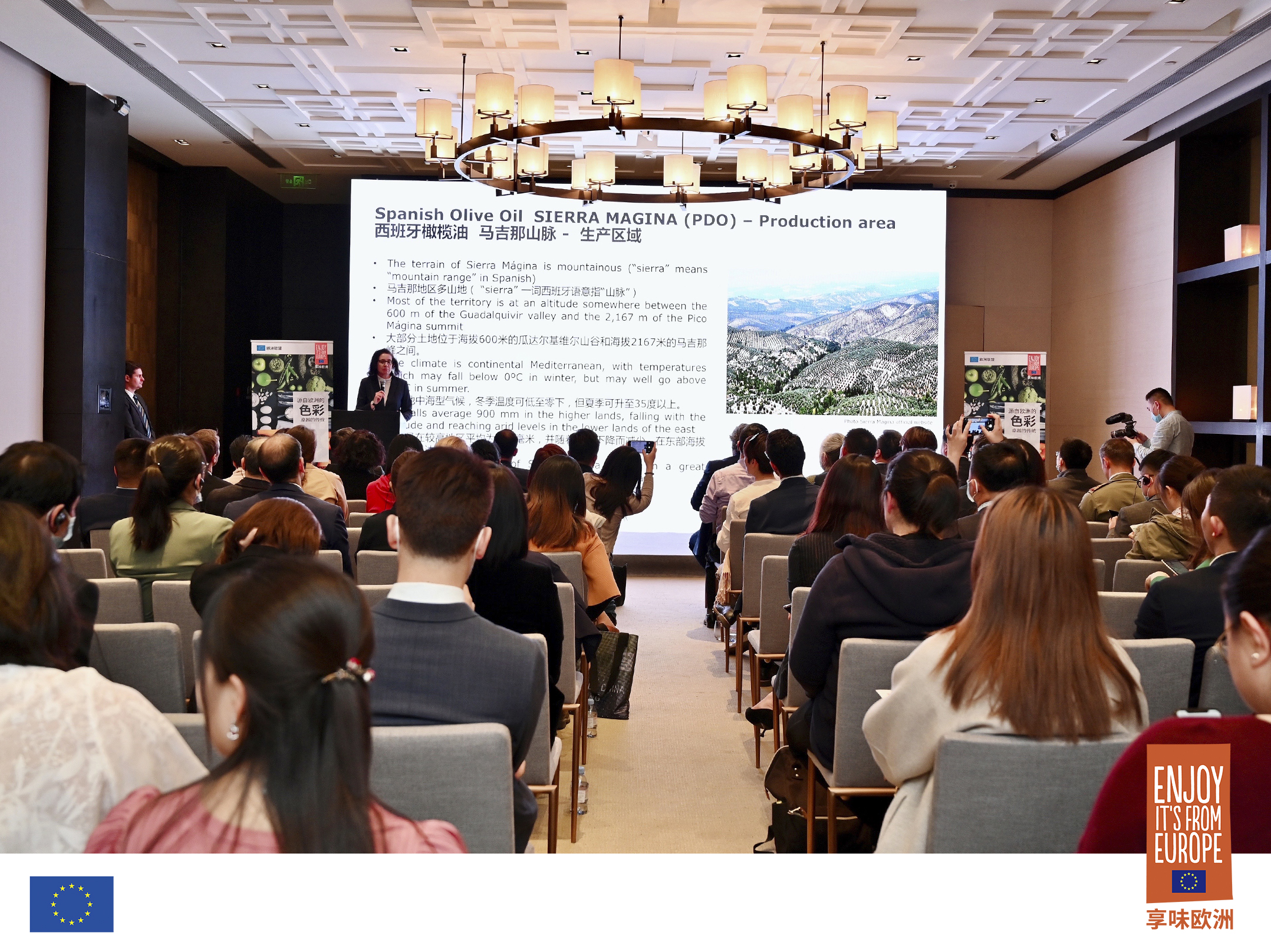

Presentation of Spanish olive oilPresentation of Spanish olive oil 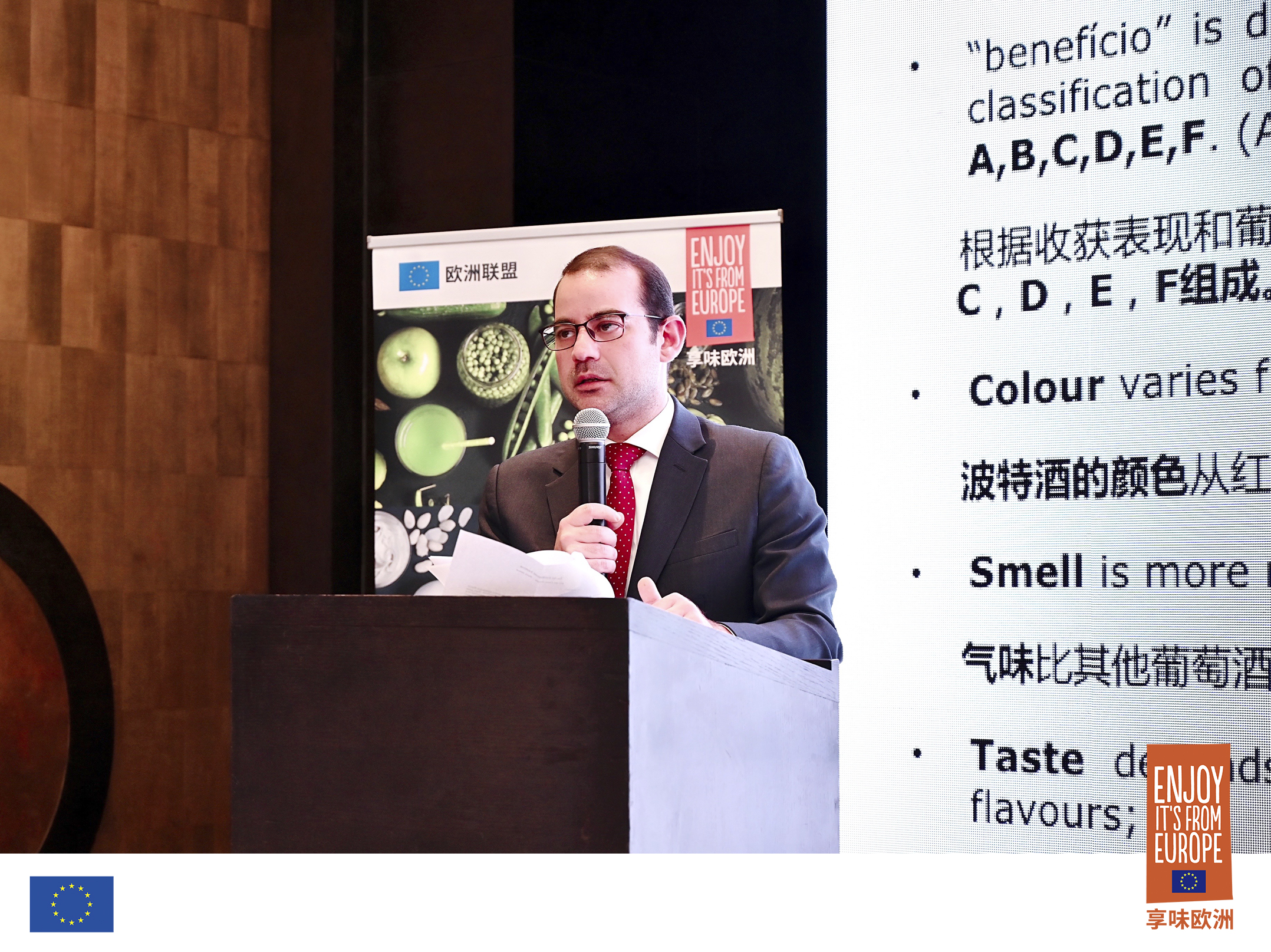

SpeakerSpeaker 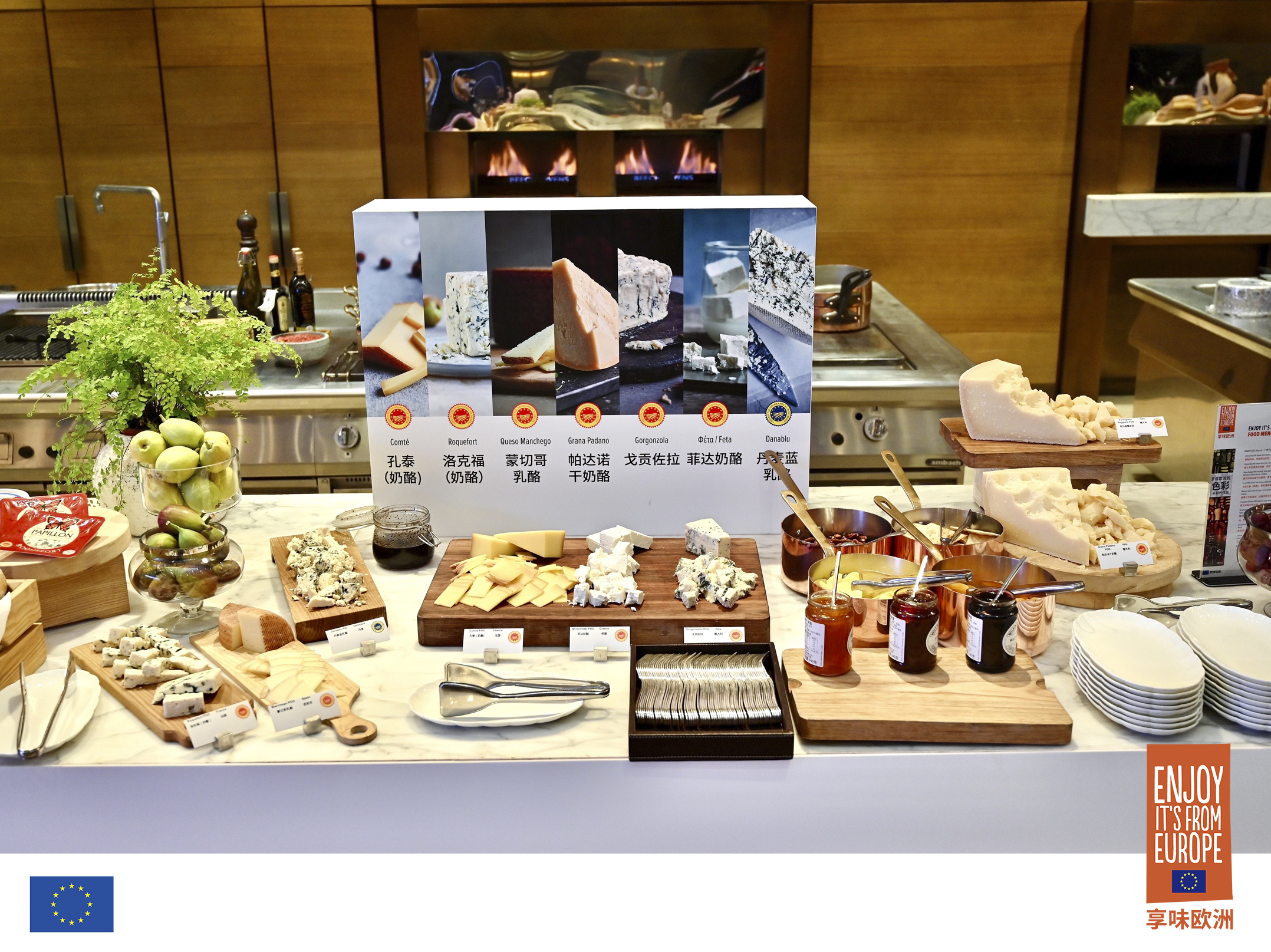

Cheese varietiesCheese varieties 

Worktop covered with banner of the eventWorktop covered with banner of the event 

Olive oil bottlesOlive oil bottles 

Buffet 2 Buffet 2 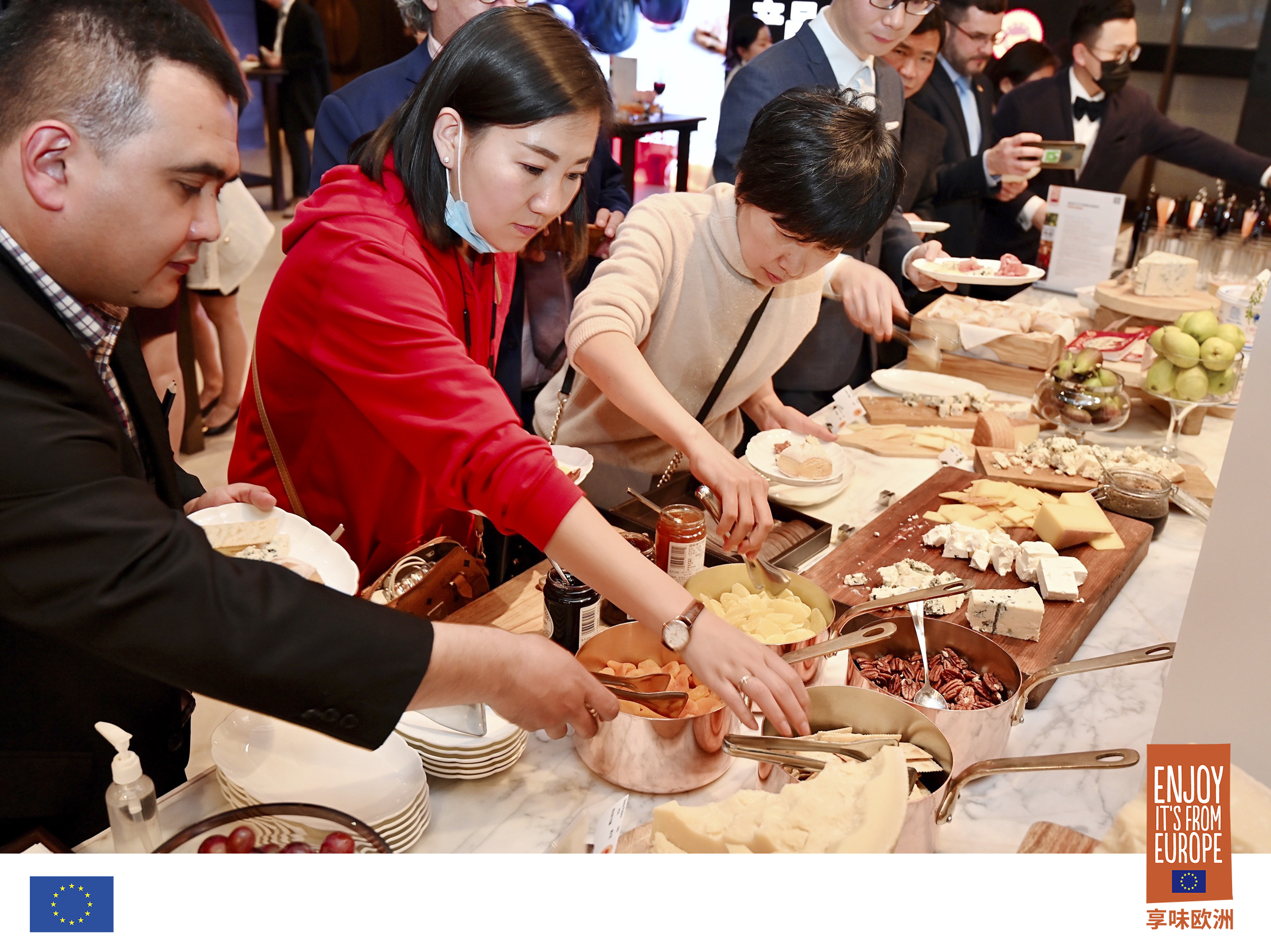

BuffetBuffet 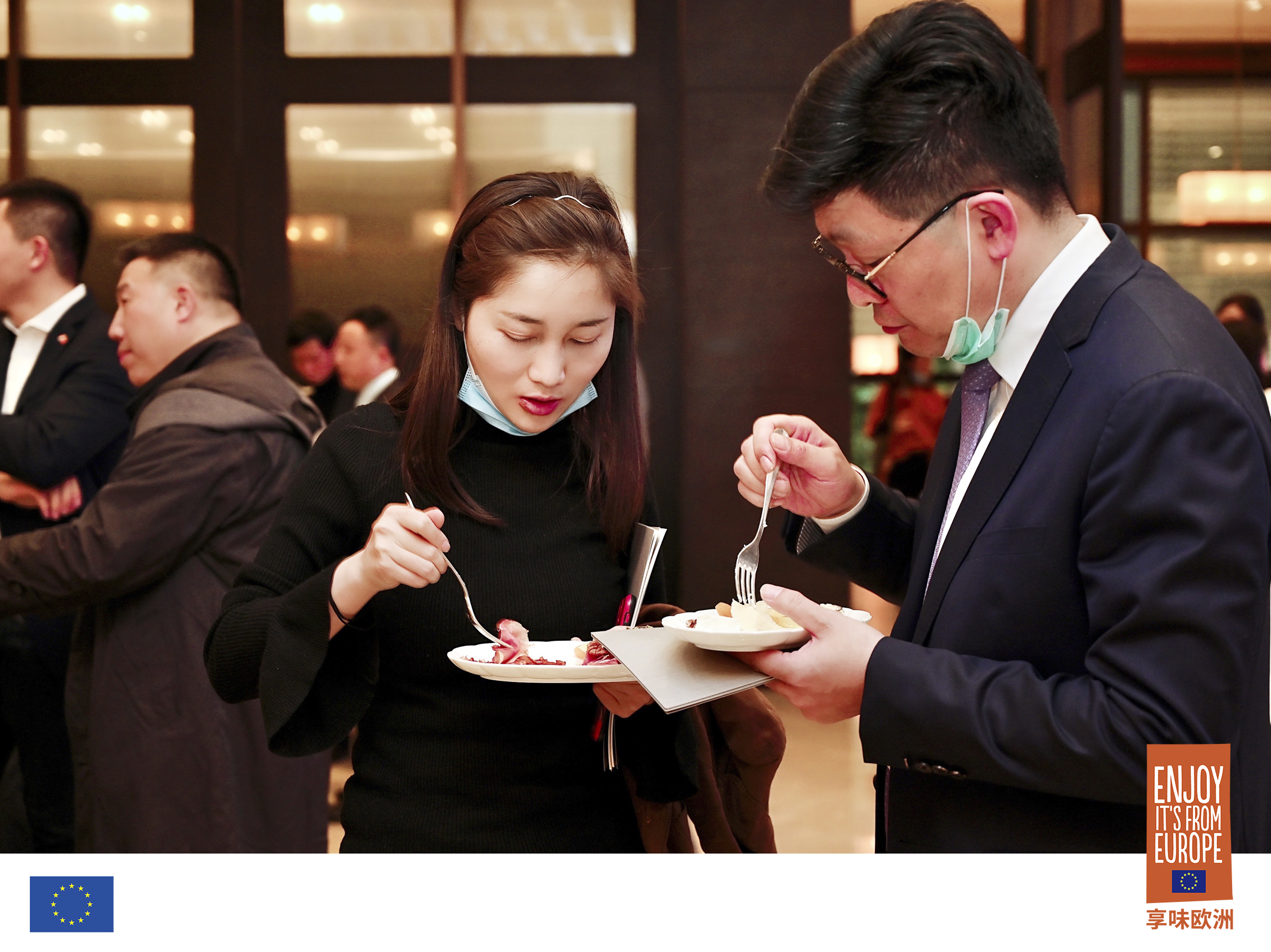

Participants tasting dishesParticipants tasting dishes 

Welcoming participantsWelcoming participants
Practical information
- When
- Thursday 25 March 2021, 10:00 - 17:00 (CET)
- Languages
- English, Chinese
Description
On 1 March 2021, the EU-China bilateral agreement protecting geographical indications in China and Europe entered into force. The agreement, the first of its kind between the EU and China, protects around 200 iconic European and Chinese agri-food names against imitation and usurpation, bringing mutual trade benefits and introducing consumers to guaranteed, authentic products from two regions with rich culinary and cultural traditions. This is the first comprehensive and high-level agreement on geographical indications signed by China with another country or market.
The EU list of GI products to be protected in China includes iconic GI products such as Cava, Champagne, Feta, Irish whiskey, Münchener Bier, Ouzo, Polska Wódka, Porto, Prosciutto di Parma and Queso Manchego. Among the Chinese GI products to be protected in the EU market are: Moutai Jiu (Spirit Drink), Pixian Dou Ban (Pixian Bean Paste), Anji Bai Cha (Anji White Tea), Panjin Da Mi (Panjin Rice) and Anqiu Da Jiang (Anqiu Ginger).
“This agreement provides high protection for European names on the Chinese market and for Chinese names on the European market,” said EU Ambassador to China Nicolas Chapuis. “It is another step in the global recognition of geographical indications, allowing us to preserve the traditional way of producing these high-quality products, conserving our food heritage, and contributing to rural economies, to European and Chinese consumers as well as society at large.” In value terms, the market for EU geographical indications is around €75 billion, or 7% of EU food and drink. GI exports of about €17 billion account for over 15% of total EU food and drink exports.
The Chinese market has high-growth potential for European food and drinks. In 2020, China was the third destination for EU agri-food products, reaching €16.3 billion between January to November. It is also the second destination of EU exports of GI products, accounting for 9% by value, including wines, agri-food products and spirit drinks. Chinese consumers appreciate the safety, quality and authenticity of European agri-food. European consumers will be able to discover genuine Chinese specialities thanks to this agreement.
